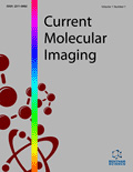Abstract
Perfusion computed tomography (CT) is an imaging technique that enables radiologists to evaluate the tumour vasculature, quantifying tumour perfusion, blood volume, and microcirculatory changes, which can provide both prognostic and predictive information to the clinician. Its increasing acceptance within oncology in recent years has been related to a combination of factors: an increasing use of anti-vascular therapy (anti-angiogenic agents and vascular disrupting agents) both as stand-alone first line agents or in combination with standard chemotherapy and/or radiotherapy, and technological improvements in CT, including faster tube rotation speeds, higher temporal sampling rates, the development of dynamic 3D acquisitions and development of commercial software programmes embedded within the clinical workflow. This review summarises current Perfusion CT techniques and their clinical application in oncological practice.
Keywords: Cancer, perfusion CT, dynamic CT, Tomography, Oncologic Practice, tumour perfusion, blood volume, microcirculatory, anti-vascular therapy, anti-angiogenic agents, vascular disrupting agents
 32
32

